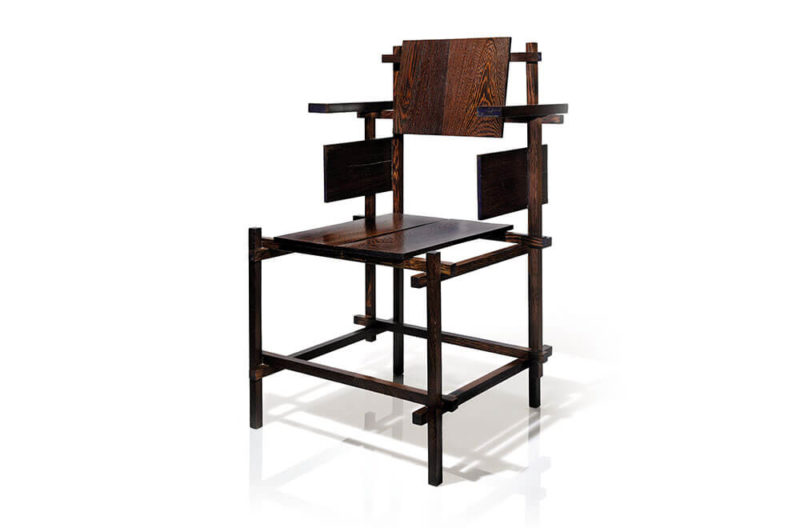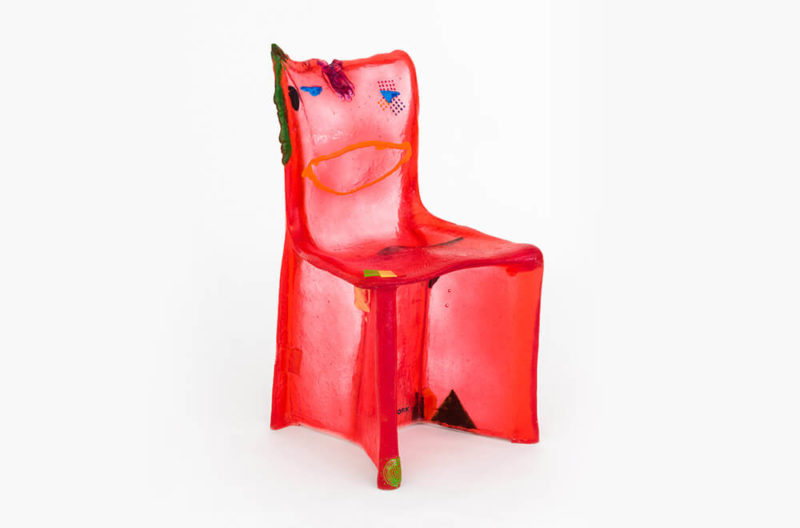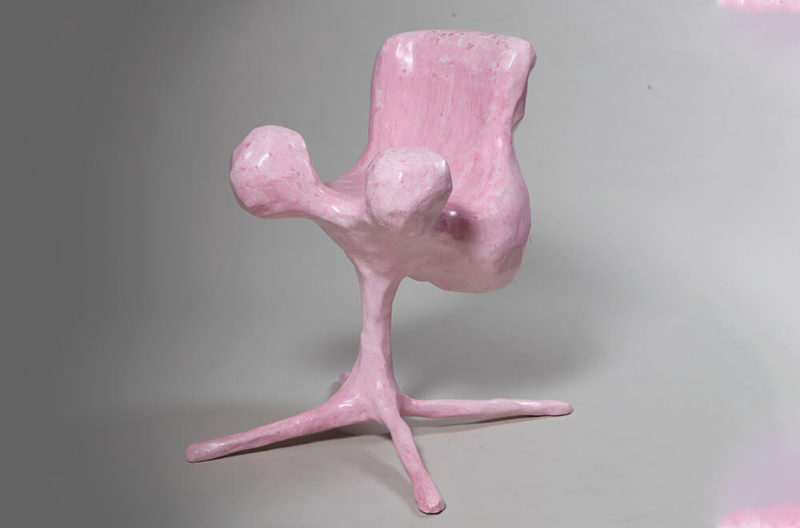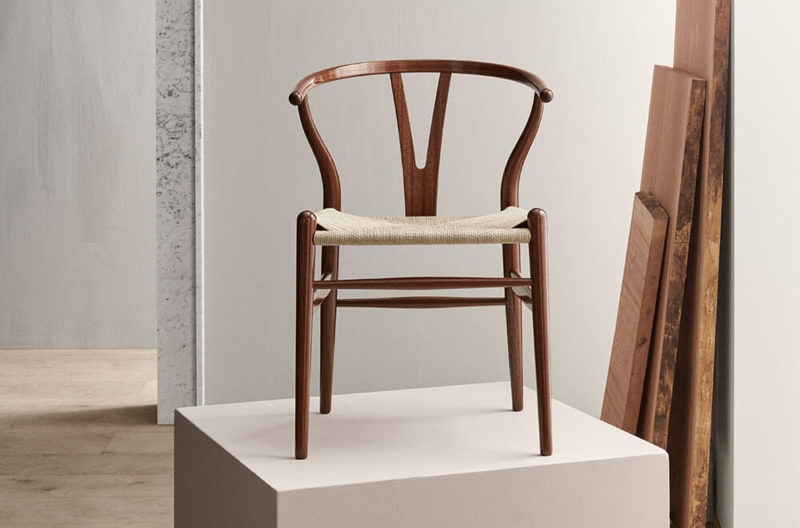‘Chair’, 1930
John Graz
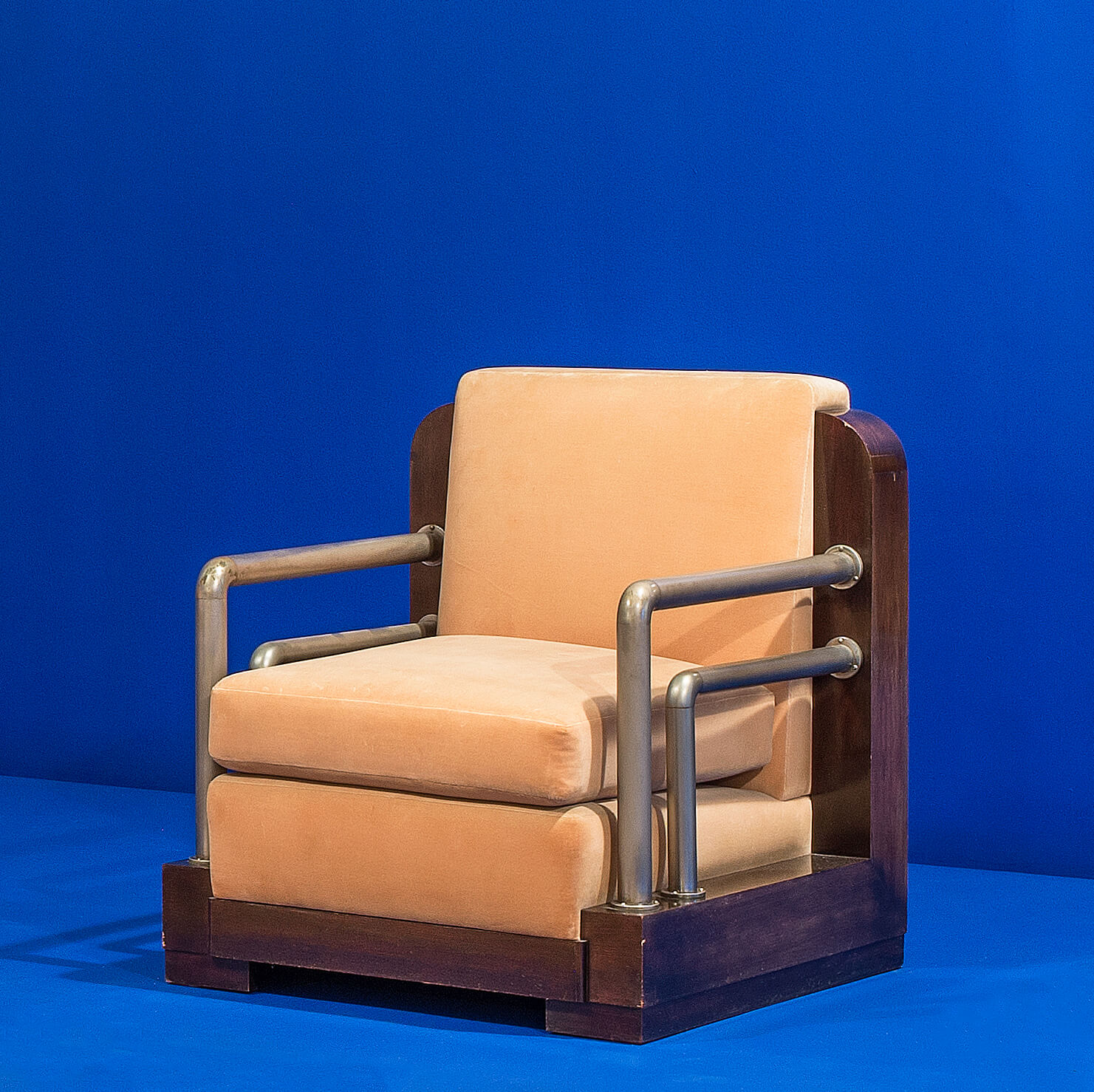
John Graz, ‘Chair’, 1930
COURTESY: Modern Art Museum / PHOTOGRAPH: Rômulo Fialdini
THIS CHAIR LOOKS as though it is part of an Art Deco structure with its solid, voluminous geometry and its architectonic-grade chrome metal tubing. It was created by Swiss designer John Graz in 1930, during a period when the prevalent design philosophy aimed to bring together design, architecture and art into a seamless and coherent ensemble.
The chair follows the Art Deco tendency towards ample proportions and comfort, with the modernistic approach of incorporating metallic elements to the design – something Graz began experimenting with from 1925. In this piece, he took that experimentation to a different level, moving from metal tubing details to a more substantial scale using heavier pipes, which are a more essential part of the design and structure of the piece.
Built with Brazilian walnut veneer and velvet pillows, this chair was part of a set designed for Brazilian collectors Fulvia and Adolphio Leirner. Even though it was commissioned by affluent clients, the chair’s aesthetics, with its industrial flavour, were in line with the conceptual ambition promoted by centres like the Bauhaus: to create design that could be mass produced.
The chair is being shown in São Paulo at the Modern Art Museum exhibition “Desafios da modernidade – Família Gomide-Graz nas décadas de 1920 e 1930” (Modern Challenges – Gomide-Graz Family in the 1920s and 1930s). The exhibition aims to showcase the connection between the visual arts and design in Brazil following the Semana de Arte Moderna de 1922 (Modern Art Week of 1922) – the seminal historic event considered the birth of 1950s Modernism in Brazil.
Born in Geneva, Switzerland, it was there that Graz met and fell in love with Regina Gomide, a Brazilian woman, who along with her brother Antonio, were colleagues of Graz at the Academy of Fine Arts Geneva. After returning to Brazil, where Graz and Gomide, married, the three quickly became immersed in the city’s cultural scene and were exhibiting participants in the Semana de Arte Moderna de 1922. The trio went on to work together designing interiors imbued with the Gesamtkunstwerk spirit that was so prevalent in European thinking at the time. “Their creations, the paintings, drawings, fabrics, furniture and light fixtures were designed to … function as a set. It is art integrated with the dwelling space,” the exhibition’s curator, Maria Alice Milliet, explains.
Having introduced Brazil to abstract geometric compositions in home furnishing through his Art Deco creations, Graz, with this chair set, seems to further lay the ground for Brazilian Modern design to develop. Its basic shapes and materials were unusual for the conservative tastes of the time, but offered other designers a path to explore a range of possibilities that would later culminate with the blossoming of legendary Brazilian Modernist furniture design.
Desafios da modernidade – Família Gomide-Graz nas décadas de 1920 e 1930 at MAM runs until 15th August.




